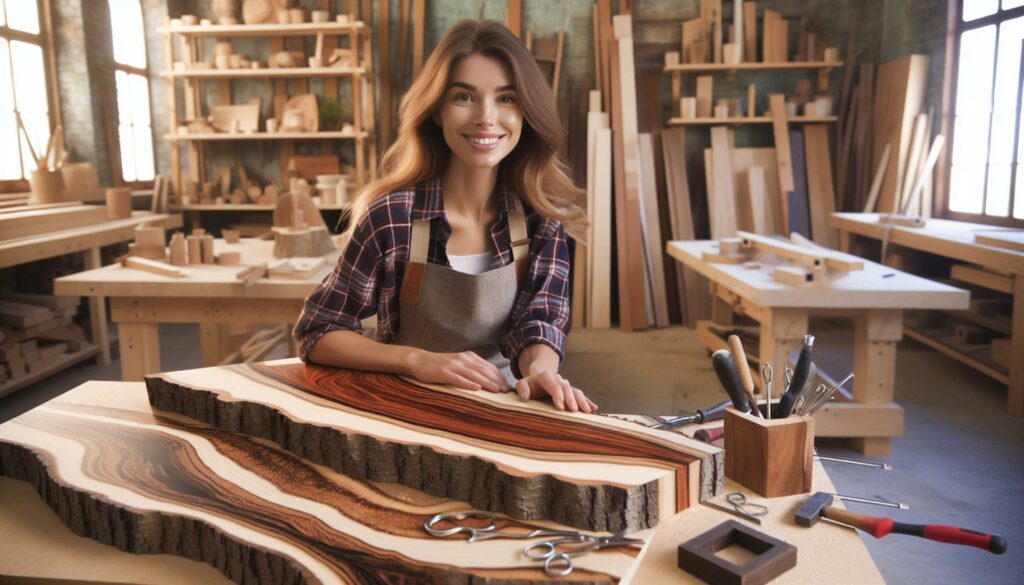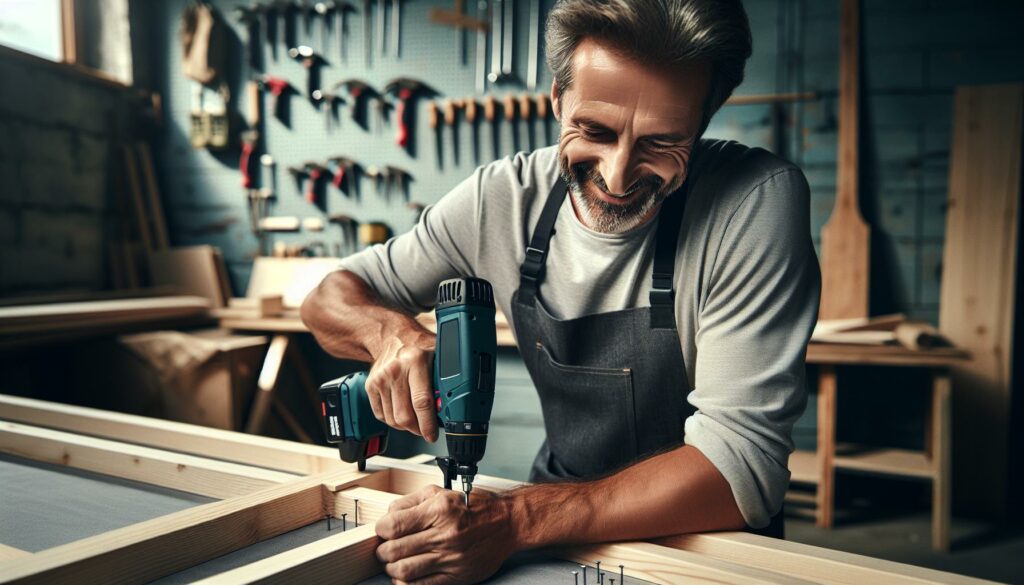There’s something undeniably captivating about live edge wood projects. The natural beauty of the wood, with its unique shapes and organic lines, brings a touch of the outdoors into our homes. As someone who loves to create, I find that working with live edge wood not only allows me to express my creativity but also connects me to nature in a meaningful way.
Key Takeaways
- Unique Aesthetic: Live edge wood projects feature the natural shapes and imperfections of wood, bringing an organic touch to home decor.
- Materials Matter: Choose high-quality woods like walnut, cherry, and maple for durability and visual appeal; essential tools include saws, sanders, and clamps.
- Preparation is Key: Cleaning, precision cutting, and thorough sanding are crucial steps to ensure a professional finish in live edge projects.
- Finishing Techniques: Apply stains and sealants to enhance the wood’s beauty while providing protection against wear and moisture.
- Versatile Applications: Live edge wood can be transformed into various functional and decorative items, including tables, shelves, and wall art.
- Personalized Designs: Customize each project to reflect your style; incorporate different materials and consider regular maintenance for longevity.
DIY Live Edge Wood Projects
DIY live edge wood projects offer a blend of creativity and craftsmanship that transforms raw wood into stunning works of art. Live edge wood showcases the natural shape of the tree, incorporating its imperfections and organic features. I appreciate how each piece tells a unique story, reflecting its origin and the environment.
These projects range from furniture—such as tables and benches—to decorative items like shelving and wall art. Each project requires basic woodworking skills along with a selection of tools, including saws, sanders, and finishes. When starting, I focus on selecting high-quality wood with attractive grain patterns and character.
For those interested in enhancing their living spaces, DIY live edge projects provide an opportunity to produce custom pieces tailored to personal preferences. I enjoy the process of creating functional items while showcasing the organic beauty of the wood. Sustainability also plays a role, as repurposing reclaimed wood contributes to eco-friendly practices.
Overall, the versatility and visual appeal of live edge wood projects inspire my DIY endeavors, making it a gratifying pursuit for anyone looking to elevate their home decor.
Materials Needed for Live Edge Projects
Creating live edge wood projects requires specific materials to ensure quality and durability. Below are the essential components you’ll need to get started.
Types of Wood Suitable for Live Edge Projects
- Walnut: Walnut features a rich, dark color with striking grain patterns, making it a preferred choice for high-end projects.
- Maple: Maple offers a light color with a fine texture. Its stability makes it ideal for furniture.
- Cherry: Cherry wood darkens beautifully over time, providing warmth and character to any piece.
- Birch: Birch presents a smooth surface and pale color, which complements different design themes well.
- Red Oak: Red oak is durable with prominent grain patterns, suitable for both furniture and decorative items.
- Circular Saw: A circular saw is essential for cutting live edge slabs to desired lengths.
- Jigsaw: A jigsaw allows for intricate cuts around natural edges.
- Router: A router smooths edges and creates decorative profiles on surfaces.
- Sander: A sander provides a polished finish, essential for enhancing the wood’s natural beauty.
- Drill: A drill is necessary for creating holes for hardware or joining pieces together.
- Clamps: Clamps hold pieces securely in place while assembling or drying finishes.
Having these materials and tools on hand ensures that live edge wood projects come together seamlessly, showcasing the unique beauty of each wood slab.
Step-by-Step Guide to Creating Live Edge Projects
Creating live edge wood projects involves careful planning and a few key steps. Below, I outline the essential processes to help ensure a successful project.
Selecting Your Live Edge Wood
Selecting high-quality live edge wood is crucial. I focus on the following types:
- Walnut: Dark, rich grains offer elegance.
- Maple: Light color with subtle grain patterns enhances brightness.
- Cherry: Warm tones develop character over time.
- Birch: Smooth texture and uniform color provide versatility.
- Red Oak: Prominent grains add strength and visual interest.
I examine wood for natural defects, such as knots or cracks, which can affect the integrity of the final piece. Choosing wood with unique features enhances the distinctiveness of each project.
Preparing the Wood for Projects
Preparing the wood involves several key steps:
- Cleaning: I remove any dirt and debris using a soft brush or cloth.
- Cutting: I use a circular saw or jigsaw to achieve desired dimensions. Precision in cutting ensures accuracy in fitting the pieces together.
- Sanding: I sand all surfaces using a sander, starting with coarse-grit paper and progressing to finer grits. This process smooths the wood and highlights grain patterns.
- Edge Treatment: I often leave the edges natural, preserving their live edge look or refining some sections with a router for smoother transitions.
Proper preparation sets the foundation for a professional-looking project.
Finishing Techniques for Live Edge Wood
Finishing adds protection and enhances aesthetics. Here’s what I do:
- Staining: I often apply a wood stain to enrich color and highlight grain details. Choosing a stain that complements the wood’s natural hue is essential.
- Sealing: After staining, I seal the wood using polyurethane or a similar protective finish. This step safeguards against moisture and wear.
- Buffing: I use a buffing cloth to ensure an even layer of finish, enhancing shine and longevity.
Applying the right finishing techniques not only enhances the natural beauty of the wood but also increases the durability of the completed projects.
Creative Ideas for Live Edge Wood Projects
Exploring creative ideas for live edge wood projects opens up endless possibilities. Each project showcases the wood’s unique beauty while serving a functional purpose.
Furniture Projects
- Live Edge Tables: Constructing dining or coffee tables using thick slabs of live edge wood emphasizes the natural grain and contours. I often select sizes that accommodate various spaces, using simple hairpin legs for a modern touch.
- Benches: Crafting outdoor or entryway benches from live edge wood pairs rustic charm with natural durability. I prefer to add sturdy, weather-resistant finishes for outdoor use while leaving the wood’s features on display.
- Shelving Units: Creating floating shelves from live edge wood transforms barren walls into stunning showcases. I utilize brackets that complement the wood, enhancing the overall aesthetic without overpowering it.
- Side Tables: Designing unique side tables adds character beside sofas or beds. I choose smaller slabs and incorporate elements like metal bases for stability and style.
- Wall Art: Cutting smaller sections of live edge wood can produce striking wall art pieces. I often paint or apply epoxy resin to enhance color and depth while maintaining the wood’s natural features.
- Charcuterie Boards: Crafting live edge charcuterie boards offers both utility and visual appeal. I select an appealing shape and finish it with food-safe oils, highlighting the wood’s unique grain.
- Coasters: Making coasters from smaller live edge slices serves practical purposes while showcasing the beauty of the wood. I seal them with a protective coating for water resistance.
- Plant Stands: Designing plant stands from live edge materials allows for a naturalistic display of indoor plants. I elevate the stands to create height variety without overshadowing the greenery.
- Photo Frames: Constructing photo frames from live edge wood incorporates organic elements into home décor. I ensure the frames highlight the photograph while retaining their rustic charm.
These creative ideas for live edge wood projects allow for personalization and uniqueness, enhancing the beauty of any space.
Tips for Success with Live Edge Wood
Select high-quality live edge wood to ensure durability and beauty. Look for wood with interesting grain patterns and minimal defects. Examine pieces carefully to detect cracks or knots, which may weaken the structure.
Prepare the wood properly before any project. Clean it thoroughly to remove dust and debris. Use a circular saw or jigsaw for precise cuts, aligning the blade with the wood grain for a smoother finish. Sand each surface progressively, starting with coarse grit and moving to finer grit to achieve a polished appearance.
Treat edges to enhance aesthetics and safety. Use a router to create rounded edges, reducing the risk of splintering and making the piece more visually appealing. The edge treatment should complement the overall style of the project.
Finish the wood with care to protect its natural beauty. Choose a high-quality finish like oil, varnish, or polyurethane, depending on the intended use of the item. Apply multiple thin coats for a durable layer while allowing adequate drying time between applications.
Incorporate creativity into designs. Tailor each project to reflect personal style and space requirements. Experiment with different shapes and sizes, combining live edge wood with other materials like metal or glass for a unique look.
Consider ongoing maintenance for live edge projects. Regularly check for signs of wear, especially in high-use items like tables or benches. Reapply finish periodically to maintain protection and luster.
Document the process for future reference. Take photos at different stages to capture progress and transformations, enabling easier replication of techniques in future projects.


